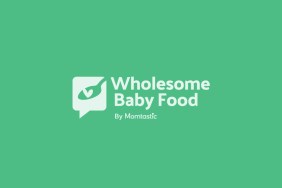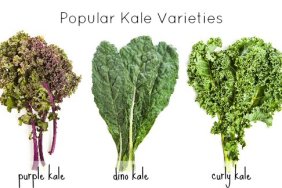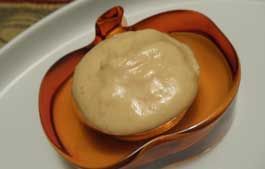Allergies and Baby Food – Learn about baby food allergies and how to identify foods that may cause allergies
The “4 Day Wait Rule” and Allergies:
It is important to follow the “four day wait” rule when introducing your baby to new solid foods and even more important if your family has a history of food allergies. When you introduce a new food over the course of several days, you are better able to determine exactly how your baby is reacting to that food. As mentioned, this is most important if you and/or your family members have a history of food allergies.
Following the four day wait rule and introducing new foods one at a time will also enable you to easily begin an “elimination diet”. If you suspect your infant has had an adverse reaction to a new food, you will have just a few foods to look to as the culprit. While we think the “4 day wait rule” is important, many parents don’t wait between introducing foods; it is up to you to decide if you want to follow the “wait” rule.
Is Waiting a Few Days Between Introducing New Foods Really Necessary?
There are many pediatricians who are now saying that waiting a few days before moving onto another food is not necessary at all. Considering new studies that point to the possibility that waiting to introduce allergenic foods may not prove to have any effect on future food allergies [more on this topic below], the “4 day wait rule” seems unnecessary to some. This school of thought has caught on in many circles. In the end, you should take history of food allergies/other allergies into consideration and then decide if you want to follow “the rule” or not.
What time of day is a good time to introduce new foods to your baby?
Introduce new foods during the morning or early afternoon. This will enable you to deal with any adverse reactions when your pediatrician is in office. Should an adverse reaction occur during the morning/early afternoon, it will cause the least amount of disruption in baby’s fragile routine.
How to Spot a Potential Allergic Reaction to Food
Here are several things you might note that may indicate baby has a potential allergic reaction or intolerance to a food.
- Sudden loose, diarrhea stools and/or vomiting
- Sudden rashes on the skin and bottom
- Runny Nose
- Hives
- Irritability and/or gassiness after a new food/meal
- Breathing or other respiratory troubles after a new food/meal
- Swelling of the Face, Lips and/or Tongue
- Closure or tightening of the throat
Remember, an intolerance to a food is not the same as an allergy to a food and its symptoms typically involve trouble within the intestines.
 Changes to Introducing Solid Foods – Allergenic Foods & Food Allergies
Changes to Introducing Solid Foods – Allergenic Foods & Food Allergies
As you may have realized after reading through the site, charts and food recommendations are conservative in nature. This conservativism is particularly apparent in the recommendations for for introducing possible allergenic foods.
As more and more studies come to light, there is a move to introduce allergenic foods to babies prior to 12 months (or older). The studies published from 2007 and on seem to show that introducing allergenic foods between 4-6 months of age may actually be better sooner rather than later and may provide protection against atopic disease (eczema or asthma for example). For example, introducing your 6 or 7 month old to whole eggs as opposed to just the yolks is given a green light. Please keep in mind that if you have a family history of food allergies, you might want to delay those allergenic foods. Of course, you should discuss this with your baby’s pediatrician!
In a 2008 update and affirmation of an AAP Policy Statement, the AAP notes the folllowing:
“Although solid foods should not be introduced before 4 to 6 months of age, there is no current convincing evidence that delaying their introduction beyond this period has a significant protective effect on the development of atopic disease regardless of whether infants are fed cow milk protein formula or human milk. This includes delaying the introduction of foods that are considered to be highly allergic, such as fish, eggs, and foods containing peanut protein.” Click to view report
Resources and Studies relating to introducing allergenic foods earlier:
- German Study “This study found no evidence supporting a delayed introduction of solids beyond 4 or 6 months for the prevention of asthma, allergic rhinitis, and food or inhalant sensitization at the age of 6 years.”
- Dairy Introduction past 9 months This study notes that “More delay in introduction of cow milk products was associated with a higher risk for eczema.”
- ESPGHAN study “Exclusive or full breast-feeding for about 6 months is a desirable goal. Complementary feeding (ie, solid foods and liquids other than breast milk or infant formula and follow-on formula should not be introduced before 17 weeks and not later than 26 weeks. There is no convincing scientific evidence that avoidance or delayed introduction of potentially allergenic foods, such as fish and eggs, reduces allergies, either in infants considered at increased risk for the development of allergy or in those not considered to be at increased risk.
- Finnish Study – Late Introduction of Solids “Late introduction of solid foods was associated with increased risk of allergic sensitization to food and inhalant allergens. Eggs, oats, and wheat were most strongly related to food sensitization, whereas potatoes and fish were most strongly related to inhalant sensitization.
- Australian Study (2010) found infants given egg after 12 months of age are up to five times more likely to develop allergies compared to those who are introduced to eggs at four to six months, depending on how the egg is cooked.
Does my Baby have a Food Allergy or a Food Intolerance? Why is a Food Allergy Different from a Food Intolerance or a Food Reaction?
The process of any allergic reaction occurs when the body mistakes something like a food or pollen as a harmful and dangerous invader. The body reacts by releasing antibodies called immunoglobulin E(IgE). The IgE in turn prompts the body to release chemicals known as histamines.
When the histamines are released, the body reacts by producing symptoms such as runny nose, itchy eyes, a skin rash and in severe cases, anaphylaxis. In a food allergy, the body’s immune system is involved.
What is a Food Reaction or Intolerance?
A food reaction or intolerance does not involve the immune system and it is often the case that a food that caused a reaction is easily tolerated at another time. A good example of this is citrus fruits.
Citrus fruits may cause a reaction or an intolerance in infants due to the high acidity of the fruit. The infant does not react with an immune response rather the infant reacts with either a gastrointestinal response or a dermatological response. Often times infants who are fed oranges prior to the age of 1 year old will break out in rashes around the mouth or bottom and possibly have tummy cramps.
Another example of a food intolerance is a lactose intolerance. People who are lactose intolerant lack a specific enzyme that helps to digest the sugar (lactose) in dairy products. Infants are often able to digest the lactose in dairy products like yogurt and cheese as the culturing of these products has broken down the lactose. In contrast with primary lactose intolerance, cow’s milk protein allergy affects young infants and usually resolves during the first year. Learn About Updated Lactose Intolerance Statements from the AAP.
![]() Top 8 Allergenic Foods that account for
Top 8 Allergenic Foods that account for
90% of all Food Allergies: (http://www.foodallergy.org/allergens.html)
- Milk
- Egg
- Peanut
- Tree nut (walnut, cashew, etc.)
- Fish
- Shellfish
- Soy
- Wheat (visit our Wheat page)
Children may “outgrow” food allergies to milk, eggs, soybean products and wheat.
Please note that a Wheat Allergy is different from Gluten Intolerance. Gluten Intolerance (Celiac’s Disease) is never outgrown and must be managed.
Children (and Adults) rarely outgrow allergies to peanuts, tree nuts, fish and shellfish.
Why is Honey on the “Least Allergenic” List and the List of Forbidden Foods?
On 13 January 2007 Charlene wrote to ask about the foods listed on our Allergy page. “I am wondering why you have honey on the list of least allergic foods? Honey can KILL babies”
If you are like I am, I sometimes skip over wordy paragraphs and head straight to the buller points and lists. Honey is included on the list because it is NOT an allergenic food however many parents come looking for honey on the allergy page and the “forbidden foods” page..
Please note that some of the foods that appear on the list of “Least Allergenic” should not be introduced until a certain age. While these foods may not be allergy causing, there may be other issues that make that food item inappropriate to give to an infant prior to a specific age. An example of this is honey; honey is not a known allergen however it may contain spores that are botulism inducing. Honey should not be given to an infant prior to one year of age. To learn more about honey, visit our Honey and Botulism Tips section.
On this Allergy page foods are listed by their common “highest” and “lowest” allergen risk. There is also a nice table at the bottom of the page that was developed by Janice M. Joneja, Ph.D., RD.
All lists vary by the numbers of food items as well as the scale of the allergy risk. The chart below is a list of typical food allergens, broken down by the generic “high” and “low”. These food allergens are not broken down with any specificity regarding high-higher-highest allergens for example.
| MOST LIKELY TO INDUCE AN ALLERGIC REACTION | LEAST LIKELY TO INDUCE AN ALLERGIC REACTION |
|---|---|
| berries (not blueberries or cranberries.) | apples |
| chocolate | apricots |
| cinnamon (may cause rashes) | avocados |
| citrus fruits (acidic) | barley |
| coconut | beets |
| corn | broccoli |
| dairy products | carrots |
| egg whites | cauliflower |
| mustard | chicken |
| nuts | cranberries |
| peas | dates |
| peanut butter | grapes |
| pork | honey |
| shellfish | lamb |
| soy | lettuce |
| strawberries | mangoes |
| wheat | oats |
| yeast | papayas |
| peaches | |
| Looking to avoid allergenic foods in other foods? See the end of this page to learn about how eggs are found as “albumin” and much more! | pears |
| poi | |
| raisins | |
| rice | |
| rye | |
| safflower oil | |
| salmon | |
| squash | |
| sunflower oil | |
| sweet potatoes | |
| turkey | |
| veal |
You will see that on the “high” list, peas share the space with peanuts yet peas do not pose as great a concern as peanuts. This below is more of a “generic” list in that foods are in the same categories yet, they are not distinguished by allergenic levels.
The nice table that is at the bottom of our allergy page was developed by Janice M. Joneja, Ph.D., RD. In speaking to the different levels of allergenicity in foods, she says, “Nevertheless, we can make some generalizations about the degree of allergic potential (usually referred to as the allergenicity) of foods. I have developed an allergen scale (often referred to as the Joneja Food Allergen Scale), that has proved to be useful as a sort of comparative measure of the allergenicity of foods, based on the frequency of reactions in people eating a typical Western Diet.” You may visit her site here http://www.allergynutrition.com to learn more about her and her publications. Dr. Joneja compiled her more in depth and specific scale from research and experience in food allergies. The foods on the scale are listed from the highest to the lowest allergenic and are broken down into specific categories of allergenicity.
Always keep in mind that your doctor or consulting allergist should be able to tell you the appropriateness of foods for your baby.
The Joneja Food Allergen Scale
This table is based on the typical North American diet and compiled from a wide variety of sources. Foods are listed from the highest to the lowest allergenicity. People vary in their reactivity to foods and show a different pattern of reactivity depending on their individual characteristics. Persons following ethnic diets tend to show a different order of allergenicity. Allergenicity depends on a variety of factors including frequency of exposure to the food. Visit Dr. Jonja’s site to learn more.
| GRAINS &FLOURS | VEGGIES | FRUITS | NUTS &SEEDS | MEATS ETC. | DAIRY |
|---|---|---|---|---|---|
| Wheat Triticale Semolina Bulgur Spelt Kamut |
Tomato Spinach Celery (raw) |
Strawberry Raspberry Orange Fig Mango Watermelon |
Peanut Nuts: Hazelnut (filbert) |
Egg white Egg yolk |
Ice cream Cow’s milk: Homogenized Raw milk 1%, 2%, Skim |
| Corn | Carrot (raw)Green pea Lima bean Broad bean(fava bean) Cabbage (heart) |
Apple (raw) Apricot (raw) Peach (raw) Date Cantaloupe |
Walnut Pecan Brazil nut Almond Sesame seed |
Shellfish: Crab Lobster Prawn Shrimp Molluscs: Clam Oyster Scallop |
Cheese fermented: Cheddar Camembert Blue Swiss Edam Mozzarella Goat cheese |
| Oats | Pineapple Raisin Apple (cooked) |
Cocoa bean Chocolate Coconut Flax seed |
|||
| Rye Barley |
Cauliflower Brussels sprouts Green bean |
Kiwi Cherry Plum/prune Apricot (cooked) |
Cashew Pistachio Macadamia |
Fin fish Cod Sole Other white fish Tuna Salmon |
Cottage cheese Cream cheese |
| Brown rice White rice Wild rice |
Avocado Cabbage (outer leaves) |
Loganberry Boysenberry |
Legumes: Soy Dried peas Lentils Dried beans Navy Pinto Garbanzo Carob Sunflower seed |
Cream Sour cream |
|
| Quinoa | Onion Green onion Garlic |
Plantain Banana Grape |
Processed meats Pepperoni Salami Bologna Wieners Ham Bacon |
Canned milk (evaporated) | |
| Buckwheat (kasha) | Celery (cooked) Green/red peppers |
Grapefruit Lemon Lime |
Goat milk Sheep milk |
||
| Amaranth | Potato Cucumber Lettuce |
Currants (red/ black) | Pumpkin seed | Pork | Processed cheese |
| Tapioca Cassava |
Asparagus Broccoli Beets |
Peach (cooked/ canned) | Bean sprouts | Chicken Beef Veal |
Soft cheese (Philadelphia) |
| Sag Arrowroot Millet |
Squashes (all types) | Cranberry Blackberry Blueberry |
Poppy seed | Wild meats Deer Elk Moose Bear Buffalo |
Yogurt Buttermilk |
| Carrot (cooked) Parsnip |
Pear | Butter | |||
| Turnip Sweet potato Yam |
Rhubarb | Turkey Lamb Rabbit |
Clarified butter |
![]() Please be sure to read all food labels thoroughly! While products may be allergen free because specific allergenic ingredients are not listed as being contained within a product, they may be processed in a facility that also processes allergenic foods; cross contamination may be an issue.
Please be sure to read all food labels thoroughly! While products may be allergen free because specific allergenic ingredients are not listed as being contained within a product, they may be processed in a facility that also processes allergenic foods; cross contamination may be an issue.
EGG FREE DIET
Avoid foods that contain any of the following:
- albumin
- egg (white, yolk, dried, powdered, solids)
- egg substitutes
- eggnog
- globulin
- lysozyme (used in Europe)
- mayonnaise
- meringue
- ovalbumin
- ovomucin
- ovomucoid
- ovovitellin
- Simpleese
Note: A shiny glaze or yellow glaze on baked goods usually indicates the presence of egg.
SOY FREE DIET
Avoid foods that contain any of the following ingredients:
- miso
- shoyu sauce
- soy (flour, grits, nuts, milk, tofu soy bean sprouts)
- soybean (granules, curd)
- soy protein (concentrate, isolate)
- soy sauce
- textured vegetable protein (TVP)
- tofu
Ingredients that MAY indicate the presence of soy protein:
- flavorings
- hydrolyzed plant protein
- hydrolyzed soy proteins
- hydrolyzed vegetable protein
- natural flavoring
- vegetable broth
- vegetable gum
- vegetable starch
Studies show that most soy allergic individuals may safely eat products containing soy lecithin and soy oil.
WHEAT/GLUTEN FREE DIET
Avoid foods that contain any of the following:
Please note that this list is a compilation of the most common but not ALL the possible wheat/gluten foods and ingredients.
- bread crumbs
- bran
- cereal extract
- acker meal
- enriched flour
- farina
- semolina durham
- gluten
- high gluten flour
- high protein flour
- vital gluten
- wheat bran
- wheat gluten
- wheat starch
- whole wheat flour
- oats
- barley
Ingredients that MAY indicate the presence of wheat protein:
- gelatinized starch
- hydrolyzed vegetable protein
- modified food starch
- modified starch
- natural flavoring
- soy sauce
- starch
- vegetable gum
- vegetable starch
MILK FREE DIET
Food made completely without diary products will say “Parve” on the package. ![]()
You will usually find these foods in the kosher section amongst your other favorite sections in your local grocers. A “D” or “DE” on a product label next to a “K” or circled “U” may indicate the presence of milk protein; this is either as a direct ingredient (D) or because the product was processed on equipment that also processes dairy ingredients (DE).
Avoid foods that contain any of the following:
- artificial butter flavor
- butter, butter fat, buttermilk
- casein
- caseinates (ammonia, calcium, magnesium, potassium, sodium)
- cheese
- cottage cheese
- curds
- custard
- half and half
- hydrolysates (casein, milk protein, protein, whey, whey protein)
- lactalbumin, lactalbumin phosphate
- lactoglobulin
- lactose
- milk (derivative, protein, solids, malted, condensed, evaporated, dry, whole, low fat, non fat, skim)
- nougat
- pudding
- rennet casein
- sour cream, sour cream solids
- sour milk solids
- whey (delactosed, demineralized, protein concentrate)
- yogurt
![]() While parve foods are dairy free, meaning no dairy ingredients were used in the making of the product, there is a possibility of cross contamination and many parve food labels are now reflecting this. “Pareve is a designation indicating that a food contains neither milk nor meat products, by-products, or derivatives. It is critical to understand that the designation of pareve is given solely on the basis of halacha (Jewish Law). When a product is marked pareve (excepting the rare case of mislabeling – a subject for another discussion) by a reputable Kashrus agency, the religious consumer knows that the product meets all halachic criteria and may be used with any meal. But relying on this certification as a 100% certainty for medical reasons is a decision that requires careful consideration on part of the consumer, along with an understanding of the realities of food processing.” Chicago Rabbinical Council
While parve foods are dairy free, meaning no dairy ingredients were used in the making of the product, there is a possibility of cross contamination and many parve food labels are now reflecting this. “Pareve is a designation indicating that a food contains neither milk nor meat products, by-products, or derivatives. It is critical to understand that the designation of pareve is given solely on the basis of halacha (Jewish Law). When a product is marked pareve (excepting the rare case of mislabeling – a subject for another discussion) by a reputable Kashrus agency, the religious consumer knows that the product meets all halachic criteria and may be used with any meal. But relying on this certification as a 100% certainty for medical reasons is a decision that requires careful consideration on part of the consumer, along with an understanding of the realities of food processing.” Chicago Rabbinical Council
According to the OU (Orthodox Union) Kosher, the world’s largest and most widely recognized kosher certification agency,
“The trace nuts and dairy disclaimer that is now printed on many products is there to warn consumers that although there are no nuts or dairy in the ingredients of the product itself, there is a possibility of parts per millions floating in the air and ‘contaminating’ the product. The ‘contamination’ would only affect consumers with extremely severe allergies who can detect even the most trace amounts of the substance that they are reacting to. A product that is labeled OU (and thereby certified kosher parve) is halachically (by Jewish Law) parve. The parts per million does not affect the status of a product, because parts per million are negligible and have no halachic significance.
As an example, a factory might produce dairy and parve products on two separate production lines. Nonetheless, air-born particles of milk or whey powder might float onto the parve production line. Though a person might suffer an allergic reaction, the product is still halachically parve.
Companies have been especially cautious in the past few years to publicize this information as the public’s knowledge of allergens has grown. http://oukosher.org/index.php/learn/article/trace_disclaimer/
When looking for dairy-free and dairy cross-contaminant free pareve products, look for the OU pareve designation on a package. According to the OU, “The USDA allows food manufacturers to put a “non-dairy” designation on an item that may contain up to two percent in dairy ingredients. For vegetarians and those who are lactose intolerant, even this small percentage is unacceptable. Only a truly pareve classification can guarantee that absolutely no dairy ingredients, no dairy residue and no contact with dairy equipment were used to prepare the food.” http://www.oukosher.org/index.php/common/article/the_power_of_pareve/
As always, read labels for warnings of cross contamination with possible allergens of any type!
Ingredients that MAY indicate the presence of milk protein:
- brown sugar flavoring
- caramel flavoring
- chocolate
- high protein flour
- margarine
- natural flavoring
- Simplesse
TREE NUT FREE DIET
Avoid foods that contain nuts or any of these ingredients:
- almonds
- brazil nuts
- cashews
- chestnuts
- filberts / hazelnuts
- gianduja (a creamy mixture of chocolate and chopped toasted nuts found in premium or imported chocolates)
- hickory nuts
- macadamia nuts
- marzipan / almond paste
- nougat
- Nu-Nuts artificial nuts
- nut butters, i.e. cashew butter
- nut oil
- nut paste, i.e. almond paste
- pecans
- pine nuts (pinyon nuts)
- pistachios
- walnuts
- Nu-Nuts are artificial nuts that really are peanuts that have been deflavored and reflavored with a nut like pecan or walnut.
- Filberts are hazelnuts.
Avoid natural extracts such as pure almond extracts, and natural wintergreen extract (for filbert/hazelnut sensitive).
Use imitation or artificial flavored extracts.
PEANUT FREE DIET
Avoid foods that contain any of these ingredients:
- cold pressed peanut oil
- ground nuts mixed nut
- Nu-Nuts artificial nuts
- peanut
- peanut butter
- peanut flour foods and ingredients that MAY indicate presence of peanut protein:
- African, Chinese, Thai and other ethnic dishes
- baked goods (pastries, cookies, etc..)
- candy
- chili
- chocolate (candy, candy bars)
- egg rolls
- hydrolyzed plant protein
- hydrolyzed vegetable protein
- marzipan
- nougat
Peanuts are very allergenic and can cause a life threatening anaphylactic (general body) reaction.
ORAL ALLERGY SYNDROME |
|---|
| The food on this page may be one involving OAS. OAS occurs when a person sensitive/allergic to pollen develops a reaction to fruits/veggies that have a similar type of pollen. Itching & swelling of the lips, the mouth and/or throat are typical symptoms. These symptoms normally appear within minutes of eating the offending food and may be worse during the spring and fall pollen seasons. Rarely is an OAS life threatening. Click below to learn more. |
| Birch Pollen Allergies |
| Birch pollen allergies are associated with apple, carrot, cherry, pear, peach, plum, fennel, walnut, potato, spinach, buckwheat, peanut, honey, celery, and kiwifruit. |
| Cedar Allergies |
| Japanese cedar allergies are associated with melon, apple, peach and kiwifruit. |
| Mugwort Allergies |
| Mugwort allergies are associated with celery, carrot, spices, melon, watermelon, apple, hazelnut, and chestnut. |
| Grass Pollen |
| Grass pollen allergies are associated with melon, tomato, watermelon, orange, rice and cherry. |
| Ragweed Pollen |
| Ragweed allergies are associated with melon, chamomile, honey, banana, and sunflower seeds. |
| Latex |
| Latex allergies may be cross-reactive to banana, avocado, kiwi and papaya. |
![]() Remember, always consult with your pediatrician regarding introducing solid foods to your baby and specifically discuss any foods that may pose allergy risks for your baby.
Remember, always consult with your pediatrician regarding introducing solid foods to your baby and specifically discuss any foods that may pose allergy risks for your baby.
![]() This site complies with the HONcode standard for trustworthy health information:
This site complies with the HONcode standard for trustworthy health information:
verify here.




